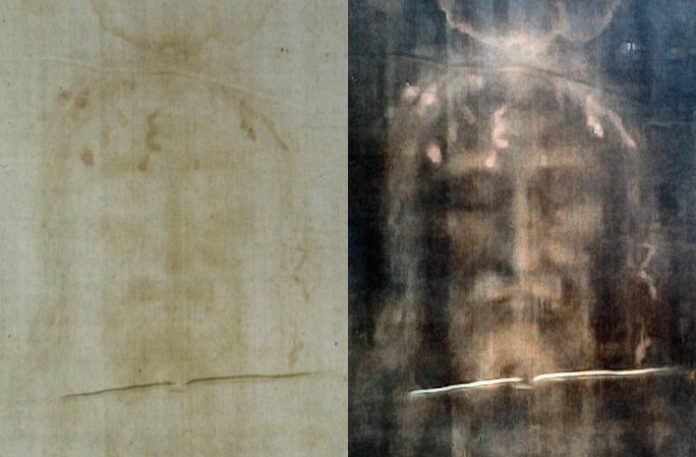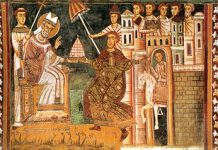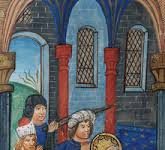There used to be a custom in Hollywood to hide the face of Christ on film – see the scenes Spartacus and Ben-Hur. This was, likely, due to a sense of ‘modesty’, the virtue that refuses to unveil what should remain hidden, as the Catechism puts it. I suppose people did not want their prayer life imprinted with the face of an actor, who may play far less pious roles in other films, and in their imaginations. Christ left us His face on the Shroud of Turin – or so I believe – a face that has been the model of all iconography of the Son of God.
I have pondered this for some time, and it was brought more fully to mind in this recent article by Leila Miller on Crisis, on the ‘False Christ of the Chosen’, which not only shows His face, but takes a fictional take on Christ to another whole level. At least in the Passion – Mel Gibson’s mega-epic – Jim Caviezel limits his dialogue and actions to what Christ actually said and did in the Gospel, with some imaginative additions (to think that Christ ‘invented’ the modern table is a bit of a stretch – why not ‘invent’ recombinant DNA technology, or quantum physics?).
With the Chosen – and, full, disclosure, I have not seen a single episode – almost all of what transpires is imaginary, fictional and, as Mrs. Miller argues not consistent with, if not contrary to, what has been ‘revealed for our salvation’. She will likely be vilified for this, but the reader may peruse the details, or be aware of his own if a viewer of the series, which sounds more like a soap opera than what are offered as the inspired Word in the terse Gospel accounts.
The Evangelists are laconic for a reason: Their task was only to reveal what we needed to know to approach Christ, follow Him, and get to heaven. As the Catechism says – warns – “many things about Jesus of interest to human curiosity do not figure in the Gospels” (#514). We should keep in mind that ‘curiosity’, strictly speaking, is a vice, wherein we seek to know what do not need to know, or should not know. This is opposed to the virtue of studiosity, striving to learn and know what we should (cf., ST, II-II., qq. 166 and 167).
This is not to say, as Mrs. Miller says, that we should not flesh out and colour our prayer life with images and montages of Christ, as per many situational methods of meditation (Ignatian, Carmelite), but here it is God speaking to us, forming the images with our cooperation, and not a group of non-Catholic (mainly, it seems, Mormon) media producers foisting upon our brains stories made up in theirs, with their limited and faulty Christology, and the need to bump up ratings, and keep people emotionally engaged in the plot.
Best to stick to the Gospels, and, to supplement, the writings of saints and mystics, such Saint Teresa of Avila, John of the Cross, Catherine of Siena, Alphonsus Ligouri, or even Anne Catherine Emmerich, whose words and descriptions of Christ are all the fruit of a deep contemplative life, and union with the divine.











